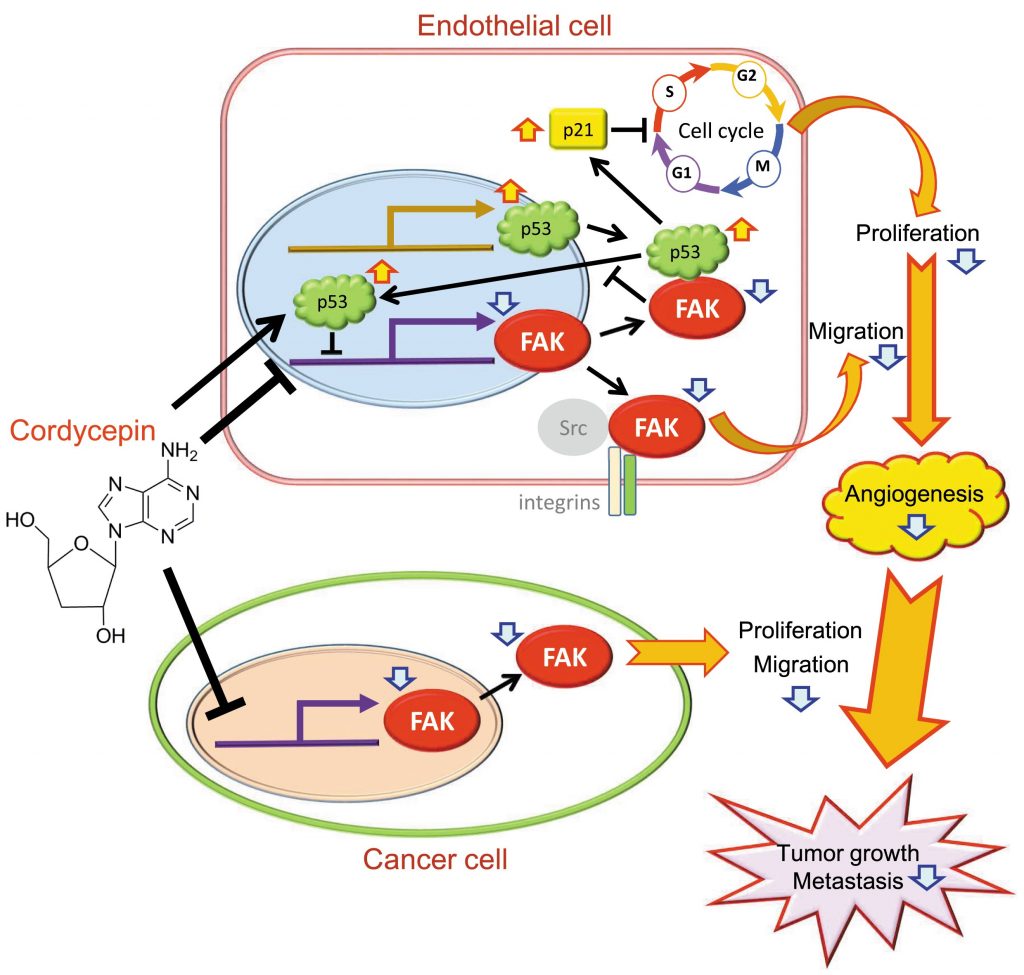
Cordycepin, a major ingredient found in the related fungus-infected caterpillars of Cordyceps militaris, has been suggested to possess anti-tumor properties in various types of malignancies. A team led by Dr. Jun-Yang Liou from the Institute of Cellular and System Medicine has previously reported that cordycepin could suppress integrin/ focal adhesion kinase (FAK) expression, the epithelial–mesenchymal transition (EMT), and cell migration in hepatocellular carcinoma (HCC). Dr. Liou’s team went further to investigate the effect of cordycepin on tumor angiogenesis and elucidate the specific molecular mechanism with findings published in Cancers (2019 Feb 1;11(2):Article number 168).
The team found that cordycepin suppressed FAK expression and the phosphorylation of FAK (p-FAK) at Tyr397 in endothelial cells (ECs). Cordycepin inhibited the proliferation, wound healing, transwell migration, and tube formation of ECs. Confocal microscopy revealed that cordycepin significantly reduced FAK expression and decreased focal adhesion number of ECs. The suppressed expression of FAK was accompanied by induced p53 and p21 expression in ECs. In addition, Dr. Liou’s team also demonstrated that cordycepin suppressed angiogenesis in an in vivo angiogenesis assay and reduced HCC tumor growth in a xenograft nude mice model. These findings indicated that cordycepin could attenuate cell proliferation and migration and may result in the impairment of the angiogenesis process and tumor growth via downregulation of FAK and induction of p53 and p21 in ECs, suggesting cordycepin may be used as a potential adjuvant for cancer therapy.
Citation: Lin, YT; Liang, SM; Wu, YJ; Wu, YJ; Lu, YJ; Jan, YJ; Ko, BS; Chuang, YJ; Shyue, SK; Kuo, CC; Liou, JY. Cordycepin suppresses endothelial cell proliferation, migration, angiogenesis, and tumor growth by regulating focal adhesion kinase and p53. Cancers. 2019 Feb 1;11(2):Article number 168.
